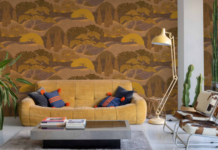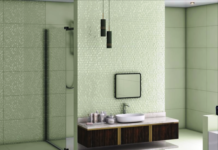By Tapaswini Mohapatra Samant, Architect, Environment Designer , Interior Designer
The house you build today should be competent, healthy and comfy for years to come. For most of us, our home will be our principal asset. So when building it makes sure to create something that won’t become outmoded and unhealthy in a decade’s time.
Bearing in mind the present global pandemic scenario, home quarantine is mandate in most of the countries. In this case home should be the place to carter all the need of mental & physical health.
It’s insane idea to think like sealing your house in a massive plastic bubble wrap, accessible only by a long transparent tube and constantly wearing a hazmat suit. Home is home, be like the conventional one. Only some minimum measure can bring major change in making it an epidemic proof shelter.
- Green belting – A house should have a healthy surrounding with plantation, which helps & aids healing and disinfecting. Trees like Neem , Peepal( generating more oxygen and helps is trapping micro organism and disinfecting the air )should be preferred .Dense trees should surround the site periphery which not only aids in air filtering but also it can aid in the stoppage of micro-organisms to the building.
- Open your windows – It’s the simplest thing you can do to improve your indoor air quality. Open your windows for even just 3 hours a day to improve the accumulation of harmful air pollutants in your indoor air. It is essential in maintaining positive pressure with ample solar radiation, ventilation to ensure that any viruses that enter your house are whisked straight back outside.
- Spruce up your furnishings with houseplants – Having indoor houseplants can help improve indoor air quality, For example, Snake Plant, Aleovera , Spider Plants etc . These plants are effective at reducing benzene, formaldehyde, carbon monoxide and xylene.
- Start with a good design – a good planned house design is most essential curb to any other factor’s specialized architect, engineer how have expertise in makes environmentally responsive home should be prioritized than am mature or self . For example the orientation of the house with respect to solar angle, wind direction, material etc plays vital role in resistive design and only a well tainted professional can take the right call.
- Insulation – To prevent problems before they start, it is recommended using materials and fittings that are air tight and are completely sealed. “use of metal frame for openings is advisable as it doesn’t allows air , light or sound into the house and can make the house air tight if required .
- Ensure your team understands sterilization’s importance – Create a standard, comprehensive sterilization procedure and train your service team or domestic helps to follow it every time. Make sure they all understand the ‘why’ behind each aspect of your procedure. It’s essential that this step is included in the turnover of the room; otherwise the time saved will pale in comparison to the weeks of growing lost.
- Right chiller system – air conditioner, air cooling, chillers system should be rightly selected to control nutrient temperature & optimum air quality. If it’s too warm or too cold , you can have certain organisms growing in adverse climate , that you don’t want .the filter shave to be changed constantly and cleaner else the infectious air will be circulating hence making the micro-organisms grow further.
- Give extra attention to public-touching (contact) areas – Things that actually come in contact with the public are to be zoned or placed separately, such that each building should have public zone, semi public zone and private zone .The purpose w.r.t. hygiene is,it stops the entry of unknown microbial growth to the most private parts of the house which when required can act as quarantine and safe isolation in terms of hygiene. Eg : Take your shoes off. The dirt outside can carry some really yucky stuff: When you walk inside your house, any or all of that could be on the bottom of your shoes, so it’s best to take them off when you get inside. So a foyer before your living room where stuff like shoes, coat , umbrella, parcels, couriers can be stored and buffered before it enters the habitable parts of the house.
- Air out new furniture – Volatile organic compounds (VOCs) are chemicals that linger in the air, and they are everywhere in our homes. VOCs such as tolulene and benzene are found in things like glues, paints, fabrics, construction materials and more. To reduce the harm to your indoor air, air out as much as possible to allow VOCs to escape. If you can, keep it in your garage for a week, or at least keep the windows in that room open most of the day for the first few months.
- Treat re-circulating water with a UV sterilizer – When you’re recirculating your water, you can have that water constantly transferring through a membrane with UV light. That is really effective with killing fungi and bacteria. It is wise to reuse recycled water and resources but it should be purified essentially to not make any negative impact.
- Use an air purifier – Air purifiers can be an effective way to reduce harmful particles in the air. If your child has asthma, it may be worthwhile to have one in his room.
- Don’t become complacent – “It’s easy to become complacent [with sterilization] and think, ‘I’m not seeing any detrimental effects. I can probably skip this that one time.’ That’s where problems start happening. And once you have a problem, it takes twice as much effort to get rid of it,” “Sterilization is imperative. … It’s really important that you have a tight protocol and that you have a strict regimen.”
- Modern technology – surely today’s architectural field have many technological innovations some of them area , steam mist windows to sterilize air , Micofibre screens, Floors that exude germ-trapping bubbles mechanical filtered ventilation systems, anti-allergen carpet, central vacuum systems, non-toxic paint and slip resistant surfaces. Get on it, we might need them sooner rather than later.
The Building design Guide article recommends that every new build should have at least some level of contagion free measures, as this will soon become an essential requirement for any home. Keeping families safe and healthy should be an integral part of any new house design. This involves each house would also need to be designed with the future of the individual family in mind.
Corporate Comm India (CCI Newswire)




















